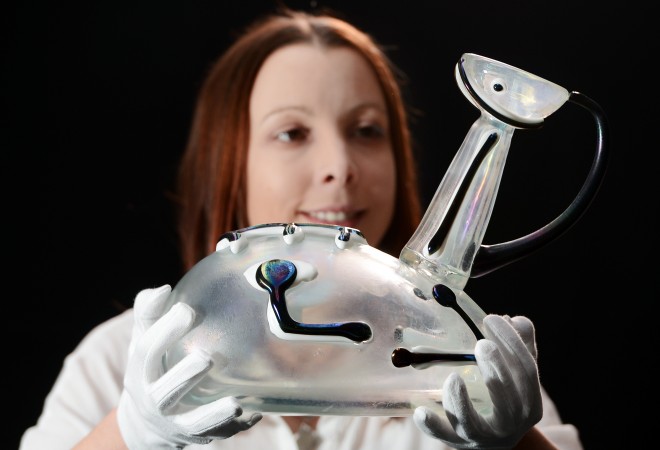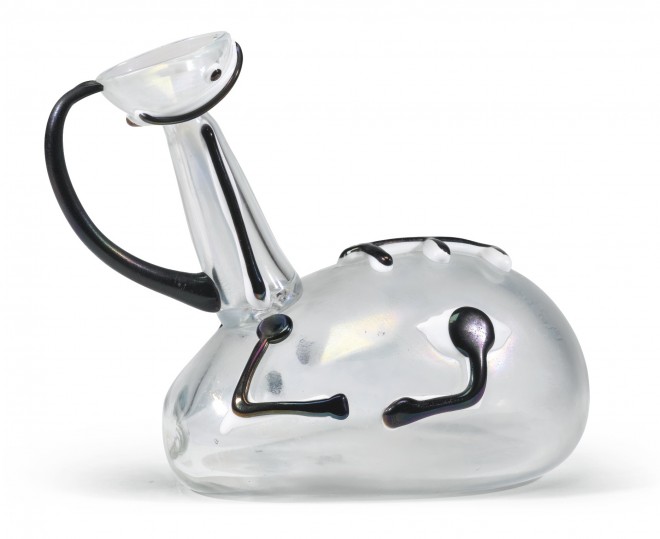The Capra is like a lot of Pablo Picasso’s work; he pared the piece down so that it’s just the essence of goat. There are just a few clues and references there, but when you kind of get it, it really is very goat.

Picasso met my mum, photographer Lee Miller, in 1937. He painted her six times, and she went on to photograph him a thousand times. There was a very intimate friendship between both my parents and Picasso that lasted until he died in 1973.
I first met him as a boy in 1950 when he came to our home at Farley Farm in Chiddingly, Sussex, and he and I made instant friends. I bit him, and he bit me right back. It didn’t spoil our friendship and I didn’t bite any more artists.
After that we visited him in his various homes in the south of France and by 1954, when he was making the glassware, we were visiting him at Villa la Californie in Cannes. He had a pet goat, Esmeralda, and we were all fascinated. It not only lived in the house, it lived outside Picasso’s bedroom door. We used to rib him about this, and he said: “Yeah, but you know, she’s afraid of the dark and if she wakes up and she doesn’t know where I am, she gets frightened, so I keep her close by.” Esmeralda came a bit later than the Capra piece, in 1957, but Picasso always had a goat in his life, right from the start.

He had an amazing ability to embrace new material. When he made ceramics, he wasn’t going to make them like anyone else. He pushed the technique absolutely as far as it would go.
Fact file
What is it? A glass sculpture made from clear, white and black glass. Look carefully at the black glass and you’ll see the goat’s features and folded legs.
Who made it? Designed by Pablo Picasso and made by glassmaker Egidio Costantini, in collaboration with Fucina degli Angeli, in 1954.
Why is it so special? Only seven of the Capra pieces, inspired by Picasso’s original drawings, were made for sale.
Where can I see it? Capra will be on display in one of our new galleries currently being designed to showcase our internationally important collections of Art and Design, opening in 2016.
I want to find out more! Read our Capra collection story on Explore.
